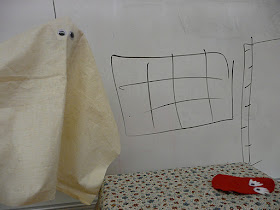 What a perfect time of the year (between Christmas and New Year's when I have free time) to find a new resource to use in Spanish class! As I was browsing the FreeTech4Teachers website, I found a post on StudyStre.am. StudyStre.am has a selection of music videos and other types of videos accompanied by the transcript. When you mouse over the words in the transcript, there is a box that pops up on the right with the English translation. If you actually click on the word in the transcript, the box on the right will list conjugations for verbs, definitions, and examples of the word used in a sentence. By clicking on the tab "Practice Words" at the top of the video screen, you can listen to the song and complete an online Cloze activity.
What a perfect time of the year (between Christmas and New Year's when I have free time) to find a new resource to use in Spanish class! As I was browsing the FreeTech4Teachers website, I found a post on StudyStre.am. StudyStre.am has a selection of music videos and other types of videos accompanied by the transcript. When you mouse over the words in the transcript, there is a box that pops up on the right with the English translation. If you actually click on the word in the transcript, the box on the right will list conjugations for verbs, definitions, and examples of the word used in a sentence. By clicking on the tab "Practice Words" at the top of the video screen, you can listen to the song and complete an online Cloze activity.If you prefer to read, on the Home page there is a tab for Articles that works similar to the videos. The languages available to practice are English, Spanish, Japanese, Italian, and Portuguese. I was hoping it had German and French so I could share it with the other language teachers at my school, but no such luck.
There is also a tab on the Home page for Exercises, and other areas which I haven't explored yet.
 Sometimes I am so focused on my goal of teaching three new words/structures through storytelling, as per the TPRS method, that I forget to include music and lyrics taught via TPRS as an option to bring variety to the lesson. Hopefully, as StudyStre.am increases its inventory of songs, I'll find more opportunities to include music in my classroom or for independent practice for the students.
Sometimes I am so focused on my goal of teaching three new words/structures through storytelling, as per the TPRS method, that I forget to include music and lyrics taught via TPRS as an option to bring variety to the lesson. Hopefully, as StudyStre.am increases its inventory of songs, I'll find more opportunities to include music in my classroom or for independent practice for the students.















